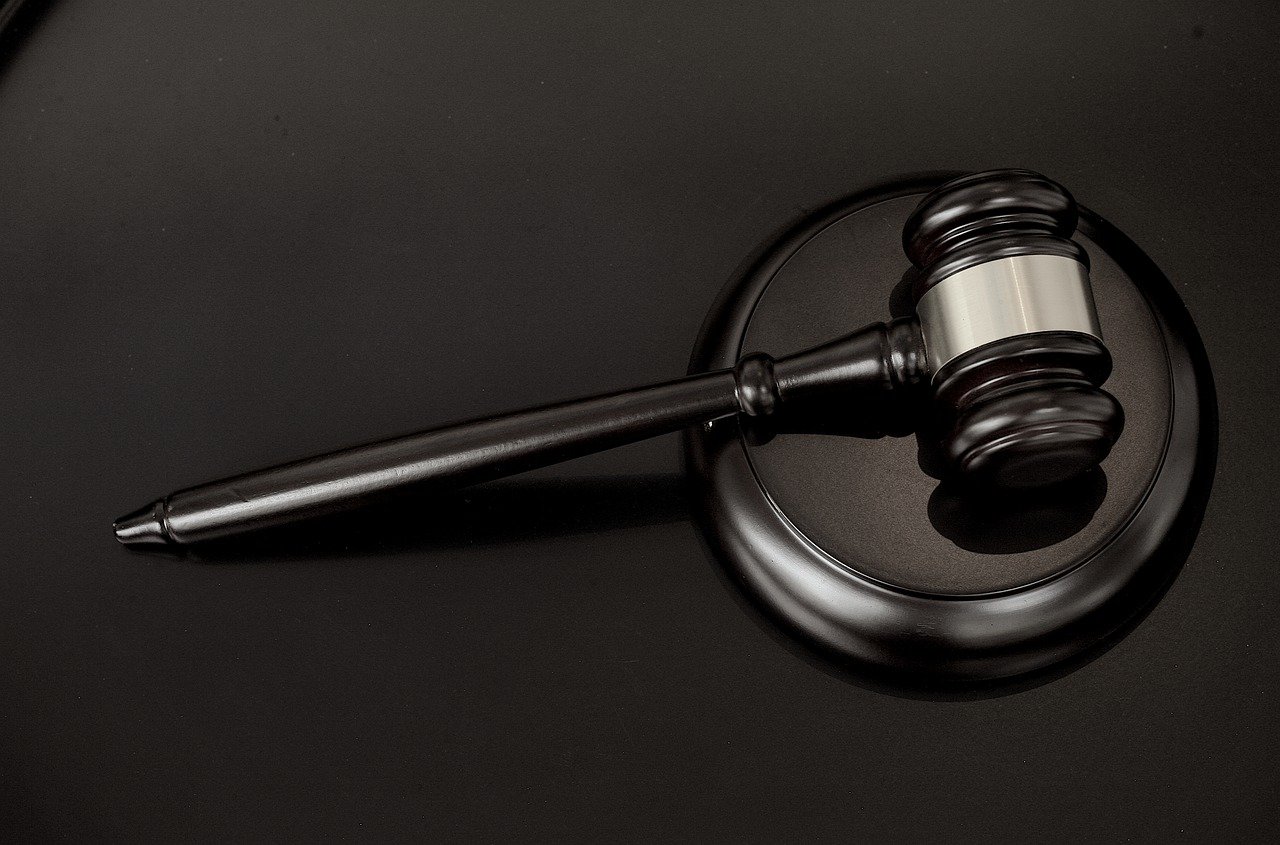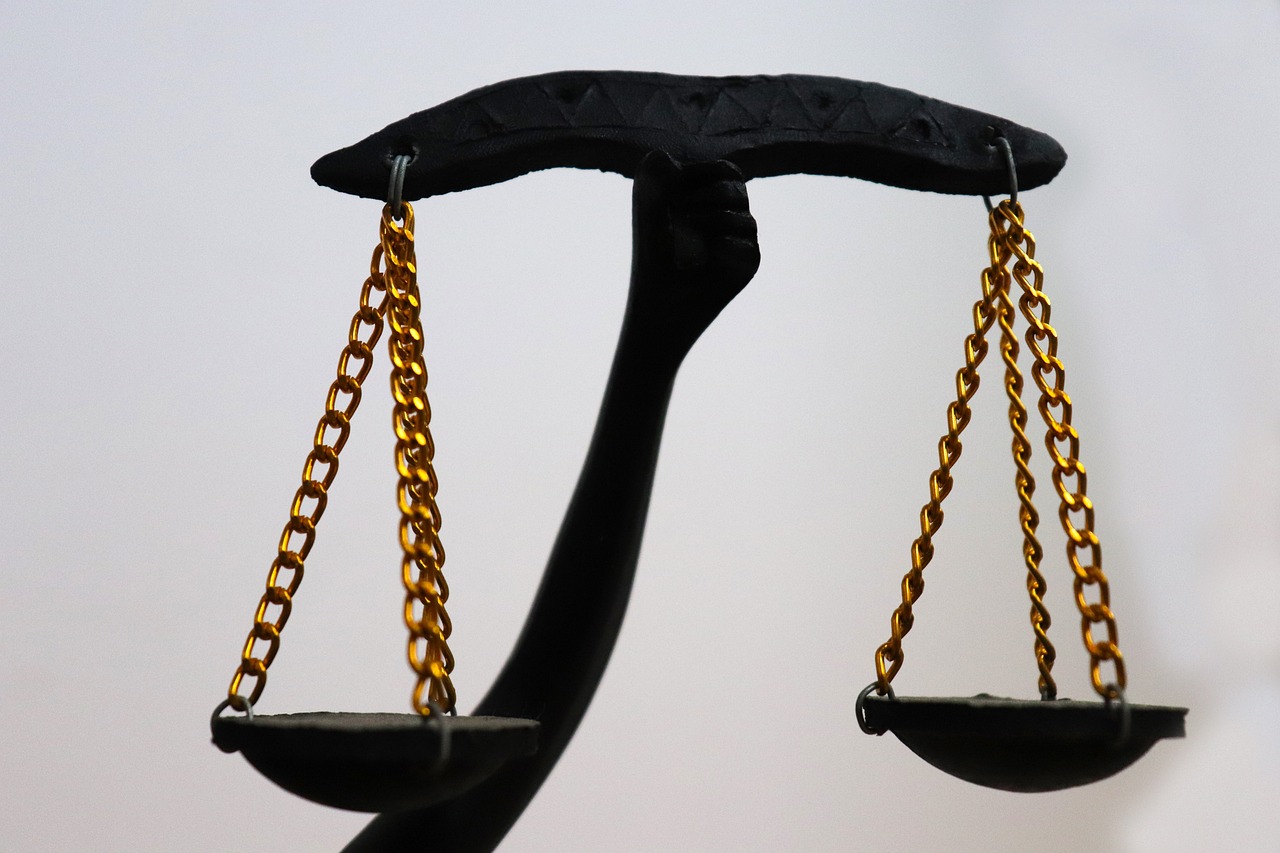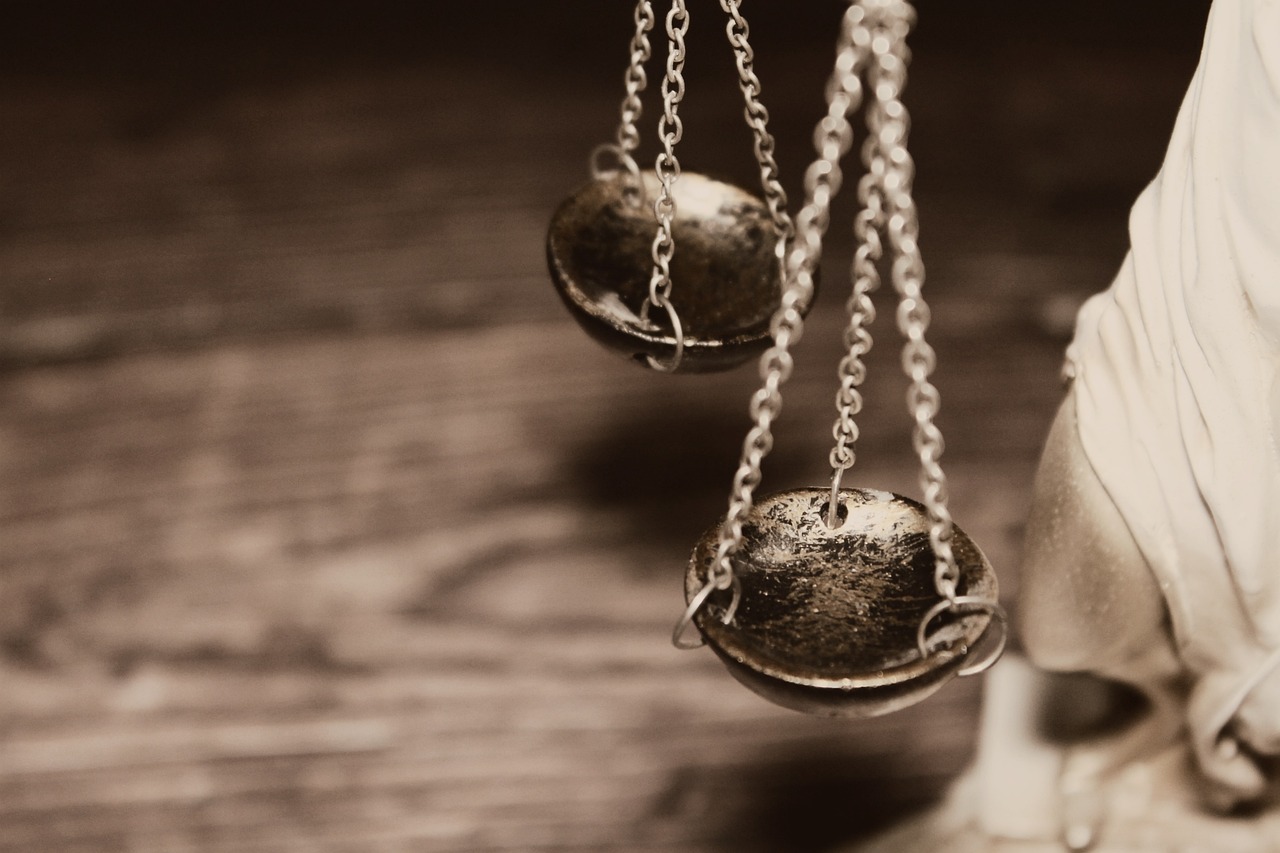
Zero Tolerance for Law Firm Malpractice
Law Firm Mal Practice” podcast delves into the intricate realm of legal ethics, examining cases of professional misconduct and negligence within law firms. Each episode dissects real-life scenarios, from breaches of client trust to mismanagement of cases, offering in-depth analysis and insights into the complexities of legal malpractice.
Hosted by seasoned legal experts and industry insiders, the podcast navigates through the nuances of ethical dilemmas, regulatory frameworks, and the consequences of malpractice. Whether you’re a legal professional, student, or simply intrigued by the legal world, “Law Firm Mal Practice” provides compelling narratives and valuable lessons on maintaining integrity and accountability in the legal profession.


Years of service


news and event
Stay updated on current affairs and happenings with our comprehensive coverage of news and events from around the world.
In today’s fast-paced business environment, finding a reliable Accounting Firm in Downers Grove, IL, is crucial for individuals and businesses alike. Whether you’re a small business owner, a freelancer, or an established corporation, partnering with a reputable accounting firm in Downers Grove, IL, can make a significant difference in your financial health and long-term success. This article explores the essential qualities of a top accounting firm in Downers Grove, IL, and why choosing the right firm can provide peace of mind and strategic advantages.
An accounting firm in Downers Grove, IL, offers a wide range of services designed to meet the diverse needs of its clients. These services typically include bookkeeping, tax preparation, financial planning, payroll processing, and auditing. Local businesses benefit greatly from working with an accounting firm in Downers Grove, IL, that understands the unique economic landscape of the area. This local expertise allows the firm to tailor its services effectively and ensure compliance with state and local regulations, ultimately saving clients time and money.
One of the primary reasons why clients seek an accounting firm in Downers Grove, IL, is the firm’s ability to provide personalized attention. Unlike larger, national firms, a local accounting firm in Downers Grove, IL, often maintains a close relationship with clients. This personal touch helps the firm understand the specific financial goals and challenges of each client. As a result, the accounting firm in Downers Grove, IL, can offer customized solutions that support sustainable growth and financial stability.
Tax laws are continually changing, making it essential to work with an accounting firm in Downers Grove, IL, that stays updated on the latest regulations. Experienced professionals in these firms ensure that clients take advantage of every possible deduction and credit, minimizing tax liabilities legally. Moreover, an accounting firm in Downers Grove, IL, can assist with complex tax situations such as estate planning, business mergers, or international transactions, ensuring compliance and strategic tax planning.
In addition to tax services, an accounting firm in Downers Grove, IL, plays a vital role in financial reporting and analysis. Businesses rely on accurate and timely financial reports to make informed decisions. An accounting firm in Downers Grove, IL, provides detailed financial statements that reflect the company’s health and performance. These insights are invaluable for managing cash flow, securing loans, and attracting investors. The accounting firm in Downers Grove, IL, acts as a trusted advisor, helping clients interpret these reports and develop strategies that align with their objectives.
Small and medium-sized enterprises (SMEs) in Downers Grove, IL, particularly benefit from the expertise of a specialized accounting firm in Downers Grove, IL. These firms understand the specific challenges SMEs face, such as cash flow management, cost control, and growth planning. By partnering with an accounting firm in Downers Grove, IL, SMEs gain access to expert guidance that empowers them to compete effectively in their markets. This collaboration often results in improved profitability and business resilience.
Technology plays an increasingly important role in the services provided by an accounting firm in Downers Grove, IL. Many firms utilize advanced accounting software and cloud-based platforms to streamline bookkeeping and tax filing processes. An innovative accounting firm in Downers Grove, IL, embraces these tools to enhance accuracy, efficiency, and security. Clients benefit from real-time access to their financial data, enabling more responsive and agile decision-making.
The reputation of an accounting firm in Downers Grove, IL, is built on trust, expertise, and a commitment to client success. Testimonials and referrals from satisfied clients often highlight the professionalism and reliability of these firms. When selecting an accounting firm in Downers Grove, IL, it is important to consider credentials such as CPA certification and memberships in professional organizations. These qualifications assure clients that the accounting firm in Downers Grove, IL, adheres to the highest standards of ethics and quality.
For individuals in Downers Grove, IL, an accounting firm can also provide valuable assistance with personal finance management. This includes tax planning, retirement strategies, and investment advice. By working with an accounting firm in Downers Grove, IL, individuals can optimize their financial resources, reduce tax burdens, and plan confidently for the future. The firm’s holistic approach ensures that clients’ personal and business finances are aligned and well-managed.
In conclusion, an accounting firm in Downers Grove, IL, offers indispensable support to both businesses and individuals seeking financial clarity and success. With a comprehensive range of services, local expertise, personalized attention, and a commitment to staying current with tax laws and technology, an accounting firm in Downers Grove, IL, stands as a valuable partner. Whether you need help with tax preparation, financial reporting, or strategic planning, choosing the right accounting firm in Downers Grove, IL, is a step toward achieving your financial goals with confidence and peace of mind. If you’re in the Downers Grove area, investing in the services of a professional accounting firm in Downers Grove, IL, is a decision that can transform your financial future.
When pursuing employment-based green cards, understanding the eb1 vs eb2 vs eb3 differences is crucial. The EB2 visa is ideal for professionals holding advanced degrees or exceptional ability, while the EB3 category is more inclusive for skilled workers and professionals with a baccalaureate degree.
The nuances between these categories are vast, and they can significantly impact your journey towards permanent residency in the United States. This guide will help you make a more informed decision about which path to pursue.
1. EB1 Requirements
EB1 visas are tailored for multinational executives and managers with “extraordinary abilities” in their fields. This category is reserved for workers with advanced degrees, as well as those who’ve achieved a high level of prominence within their professions through awards and recognition. In addition to meeting professional credentials, candidates must satisfy a “qualifying relationship” between the sponsoring employer and US company.
To qualify for an EB1 Visa, your sponsoring company must have a qualifying relationship with the US Company and demonstrate that it is a legitimate employer that has or will continue to have substantial business operations in the United States. Additionally, the job must be in an executive or managerial position and offer a salary at least at the prevailing wage for similar positions in your geographic area.
As an additional requirement, the prevailing wage must be determined by the Department of Labor to ensure that there are no qualified US workers available for the role. This can take up to two weeks to complete.
2. EB2 Requirements
Comprehending EB2 requirements is vital for professionals seeking to embark on this employment-based immigration path. This advanced category focuses on specific professional skills, offering a faster path to permanent residency than the more inclusive EB3 route.
Like EB1 and EB3, EB2 candidates must have a valid job offer, but in this case, the position must require an advanced degree or the equivalent of a baccalaureate degree. Additionally, the employer must complete a labor certification, or PERM process, to ensure that there are no qualified U.S. workers available to fill the position at a fair market salary.
For applicants with advanced degrees and exceptional abilities, this visa is a great choice for those looking to fast-track their path to American citizenship. It offers shorter processing times compared to EB3, but it also comes with stringent standards and rigorous scrutiny. Understanding these distinctions can help you decide which route is best for your career and family’s future in the United States.
3. EB3 Requirements
The EB3 visa category is less stringent and opens doors to a broader pool of professionals and workers. Those pursuing this path must prove that their activities promote prosperity, health, or cultural or educational interests of the United States. They must also prove that their work is not temporary and seasonal and that there are no qualified American workers to fill the position. Unlike the EB2 category, those seeking a EB3 visa must have at least a bachelor’s degree in the field of occupation. Work experience cannot substitute for this requirement.
Additionally, a job offer and labor certification (PERM) is required for those seeking an EB3 visa. Additionally, country-specific considerations may impact waiting times for this pathway due to annual quota limitations. Those wishing to self-petition in the EB3 category can also seek a National Interest Waiver (NIW) which allows them to bypass the labor certification and job offer requirements of the PERM process.
4. EB4 Requirements
EB-4 visas are employment-based visas that lead to permanent resident status. They are known as “special immigrants” and they do not see the same backlog that some other visa categories experience. Generally, applicants need to find a nonprofit religious organization in the US that will sponsor them. They also must provide proof of their past work as a religious worker, as well as a letter confirming their position and describing the duties they perform.
Ministers and individuals in religious vocations are eligible through this category, as well as people who intend to pursue full time compensated religious work. They must intend to enter the United States with the sole purpose of carrying on their vocation. Unlike other visa categories, this category does not have an annual cap. Once a visa becomes available, the applicant can choose between adjustment of status or consular processing. Schedule a consultation with one of our immigration lawyers to learn more about your eligibility for an EB-4 visa.
The legal profession stands as a bastion of justice and integrity, with attorneys entrusted to uphold the rule of law and protect their clients’ interests. However, amidst the complexities of legal practice, instances of malpractice can arise, casting shadows over the profession’s ethical standards. Law firm malpractice, characterized by negligent or unethical conduct, not only jeopardizes client trust but also undermines the foundations of the legal system. This article ventures into the intricate terrain of law firm malpractice, examining its root causes, far-reaching consequences, and the imperative need for preventive measures.
Understanding Law Firm Malpractice:
Law firm malpractice encompasses a spectrum of behaviors by legal practitioners that breach professional standards and result in harm or loss to clients. These behaviors may include:
1. Breach of Fiduciary Duty: Attorneys owe a fiduciary duty to act in the best interests of their clients. Breaching this duty through conflicts of interest, self-serving actions, or neglecting client welfare constitutes malpractice.
2. Incompetence or Negligence: Failure to perform legal duties with the requisite competence and diligence can lead to malpractice claims. This may involve inadequate legal research, missed deadlines, or substandard representation, resulting in adverse outcomes for clients.
3. Misrepresentation or Fraud: Deliberate misrepresentation of facts, fabrication of evidence, or misleading statements by attorneys can constitute malpractice, undermining the integrity of the legal process and causing harm to clients and other parties involved.
4. Conflict of Interest: Law firms must navigate complex ethical boundaries to avoid conflicts of interest that compromise their ability to represent clients effectively. Failure to disclose conflicts or representing conflicting interests can lead to malpractice allegations.
Consequences of Law Firm Malpractice:
The consequences of law firm malpractice reverberate across multiple dimensions, affecting clients, legal practitioners, and the broader legal community. For clients, malpractice can result in financial losses, adverse legal outcomes, and profound emotional distress. Trust in the legal system may erode, leading to skepticism and reluctance to seek legal assistance in the future.
Moreover, law firm malpractice tarnishes the reputation of the entire legal profession. Instances of malpractice undermine public confidence in the integrity and ethics of attorneys, potentially deterring individuals from seeking justice through legal channels. This erosion of trust not only impacts the malpracticing firm but also has cascading effects throughout the legal community.
Legal practitioners implicated in malpractice face professional and personal repercussions. In addition to potential disciplinary actions by state bar associations, such as license suspension or revocation, lawyers may experience irreparable damage to their professional reputation. Rebuilding trust and credibility after being associated with malpractice can be a daunting endeavor, impacting career trajectories and personal well-being.
Prevention Strategies:
Preventing law firm malpractice demands a proactive and comprehensive approach, encompassing ethical standards, risk management protocols, and ongoing professional development. Here are some strategies to mitigate the risk of malpractice:
1. Adherence to Ethical Guidelines: Law firms must prioritize adherence to the highest ethical standards, including integrity, honesty, and client confidentiality. Establishing clear ethical guidelines and providing regular training and oversight can help ensure compliance and prevent inadvertent violations.
2. Competence and Due Diligence: Attorneys must maintain competence in their respective areas of practice and exercise due diligence in representing clients. This includes staying abreast of legal developments, conducting thorough research, and seeking assistance or collaboration when facing unfamiliar or complex matters.
3. Conflict Checking Mechanisms: Implementing robust conflict checking mechanisms is essential to identifying and addressing conflicts of interest promptly. Utilizing technology solutions and maintaining comprehensive conflict databases can help law firms navigate ethical dilemmas and avoid malpractice allegations.
4. Communication and Transparency: Open communication with clients regarding case developments, potential risks, and legal strategies fosters trust and reduces the likelihood of misunderstandings or disputes. Lawyers should provide clear and transparent explanations of legal processes and decisions, empowering clients to make informed choices.
5. Continuous Improvement: Embracing a culture of continuous improvement enables law firms to adapt to evolving legal landscapes and emerging risks. Regularly reviewing and updating internal policies, procedures, and training programs ensures that attorneys remain vigilant against malpractice pitfalls.
Conclusion:
Law firm malpractice poses significant challenges to the legal profession, threatening client trust, professional integrity, and the credibility of the legal system. By understanding the root causes of malpractice and implementing proactive prevention strategies, law firms can mitigate risks and uphold the highest standards of ethical conduct and professionalism. Ultimately, fostering a culture of accountability, transparency, and continuous improvement is paramount to safeguarding the interests of clients and preserving the integrity of the legal profession.
In the complex and often high-stakes world of legal practice, the trust between clients and their attorneys is paramount. However, despite the rigorous training and ethical standards within the legal profession, instances of malpractice can occur, posing significant risks to both clients and practitioners alike. Law firm malpractice, characterized by negligent or unethical conduct, can have far-reaching consequences, ranging from financial loss to reputational damage. This article examines the nuances of law firm malpractice, delving into its causes, implications, and strategies for prevention.
Understanding Law Firm Malpractice:
Law firm malpractice encompasses a wide array of unethical or negligent behaviors by legal practitioners that result in harm or loss to their clients. These malpractices can manifest in various forms, including:
1. Breach of Fiduciary Duty: Attorneys are bound by a fiduciary duty to act in the best interests of their clients. Breaching this duty through conflicts of interest, self-serving actions, or prioritizing personal gain over client welfare constitutes malpractice.
2. Incompetence or Negligence: Failure to exercise the level of competence and diligence expected of a reasonable attorney can lead to malpractice claims. This may involve inadequate legal research, missed deadlines, or substandard representation, resulting in adverse outcomes for the client.
3. Misrepresentation or Fraud: Deliberate misrepresentation of facts, fabrication of evidence, or misleading statements by attorneys can constitute malpractice, undermining the integrity of the legal process and causing harm to clients and other parties involved.
4. Conflict of Interest: Law firms must navigate complex ethical boundaries to avoid conflicts of interest that compromise their ability to represent clients effectively. Failure to disclose conflicts or representing conflicting interests can lead to malpractice allegations.
Consequences of Law Firm Malpractice:
The consequences of law firm malpractice can be severe and multifaceted, impacting clients, legal practitioners, and the broader legal community. For clients, experiencing malpractice can result in financial losses, adverse legal outcomes, and emotional distress. Trust in the legal system may be eroded, leading to disillusionment and reluctance to seek legal assistance in the future.
Moreover, law firm malpractice tarnishes the reputation of the entire legal profession. Instances of malpractice undermine public confidence in the integrity and ethics of attorneys, potentially deterring individuals from seeking legal recourse when needed. This erosion of trust not only affects the malpracticing firm but also has ripple effects throughout the legal community.
Legal practitioners implicated in malpractice face professional and personal repercussions. In addition to potential disciplinary actions by state bar associations, such as license suspension or revocation, lawyers may suffer irreparable damage to their professional reputation. Rebuilding trust and credibility after being associated with malpractice can be a formidable challenge, impacting career prospects and personal well-being.
Prevention Strategies:
Preventing law firm malpractice requires a proactive and multifaceted approach that encompasses ethical standards, risk management protocols, and ongoing professional development. Here are some strategies to mitigate the risk of malpractice:
1. Adherence to Ethical Guidelines: Law firms must prioritize adherence to the highest ethical standards, including integrity, honesty, and client confidentiality. Establishing clear ethical guidelines and providing regular training and oversight can help ensure compliance and prevent inadvertent violations.
2. Competence and Due Diligence: Attorneys must maintain competence in their respective areas of practice and exercise due diligence in representing clients. This includes staying abreast of legal developments, conducting thorough research, and seeking assistance or collaboration when facing unfamiliar or complex matters.
3. Conflict Checking Mechanisms: Implementing robust conflict checking mechanisms is essential to identifying and addressing conflicts of interest promptly. Utilizing technology solutions and maintaining comprehensive conflict databases can help law firms navigate ethical dilemmas and avoid malpractice allegations.
4. Communication and Transparency: Open communication with clients regarding case developments, potential risks, and legal strategies fosters trust and reduces the likelihood of misunderstandings or disputes. Lawyers should provide clear and transparent explanations of legal processes and decisions, empowering clients to make informed choices.
5. Continuous Improvement: Embracing a culture of continuous improvement enables law firms to adapt to evolving legal landscapes and emerging risks. Regularly reviewing and updating internal policies, procedures, and training programs ensures that attorneys remain vigilant against malpractice pitfalls.
Conclusion:
Law firm malpractice poses significant challenges to the legal profession, threatening client trust, professional integrity, and the credibility of the legal system. By understanding the root causes of malpractice and implementing proactive prevention strategies, law firms can mitigate risks and uphold the highest standards of ethical conduct and professionalism. Ultimately, fostering a culture of accountability, transparency, and continuous improvement is essential to safeguarding the interests of clients and preserving the integrity of the legal profession.
In the realm of legal practice, the trust between a client and their attorney is sacrosanct. However, despite the ethical standards and rigorous training within the legal profession, instances of malpractice can occur, casting shadows over the integrity of law firms. Law firm malpractice, characterized by negligent or unethical conduct, not only undermines the trust essential for the legal system but also imposes severe consequences on both clients and practitioners. This article delves into the intricacies of law firm malpractice, exploring its implications, causes, and preventive measures.
Understanding Law Firm Malpractice:
Law firm malpractice encompasses a spectrum of unethical or negligent behaviors by legal practitioners that result in harm or loss to their clients. These malpractices can manifest in various forms, including but not limited to:
1. Breach of Fiduciary Duty: Lawyers owe a fiduciary duty to their clients, requiring them to act in the client’s best interest. Breaching this duty through conflicts of interest, self-dealing, or prioritizing personal gains over client welfare constitutes malpractice.
2. Incompetence or Negligence: Failure to perform legal duties with the level of competence and diligence expected of a reasonable attorney can lead to malpractice claims. This may involve inadequate research, missed deadlines, or substandard representation, resulting in adverse outcomes for the client.
3. Misrepresentation or Fraud: Deliberate misrepresentation of facts, fabrication of evidence, or misleading statements by attorneys can constitute malpractice, undermining the integrity of the legal system and causing harm to clients and other parties involved.
4. Conflict of Interest: Law firms must navigate complex ethical boundaries to avoid conflicts of interest that compromise their ability to represent clients effectively. Failure to disclose conflicts or representing conflicting interests can lead to malpractice allegations.
Consequences of Law Firm Malpractice:
The repercussions of law firm malpractice extend far beyond financial losses or legal sanctions. For clients, experiencing malpractice can shatter trust in the legal system and inflict significant emotional distress. Financial ramifications, including loss of assets or settlements, can exacerbate the already stressful situation, leaving clients disillusioned and seeking recourse.
Moreover, law firm malpractice tarnishes the reputation of the entire legal profession. Public perception of attorneys as guardians of justice diminishes when instances of malpractice come to light. This erosion of trust not only affects the malpracticing firm but also undermines confidence in the legal system as a whole, potentially deterring individuals from seeking legal assistance when needed.
Legal practitioners implicated in malpractice face professional and personal consequences. Aside from potential disciplinary actions by state bar associations, including license suspension or revocation, lawyers may suffer irreparable damage to their professional reputation. Rebuilding trust and credibility after being associated with malpractice can be a daunting task, impacting career prospects and personal well-being.
Prevention Strategies:
Preventing law firm malpractice requires a multifaceted approach encompassing ethical standards, risk management protocols, and continuous professional development. Here are some strategies to mitigate the risk of malpractice:
1. Adherence to Ethical Guidelines: Law firms must uphold the highest ethical standards, prioritizing integrity, honesty, and client confidentiality. Establishing robust ethical guidelines and ensuring compliance through regular training and oversight can prevent inadvertent violations that may lead to malpractice.
2. Competence and Due Diligence: Attorneys must maintain competence in their respective areas of practice and exercise due diligence in representing clients. This includes staying abreast of legal developments, conducting thorough research, and seeking assistance or collaboration when facing unfamiliar or complex matters.
3. Conflict Checking Mechanisms: Implementing rigorous conflict checking mechanisms is crucial to identifying and addressing conflicts of interest promptly. Utilizing technology solutions and maintaining comprehensive conflict databases can help law firms navigate ethical dilemmas and avoid malpractice allegations.
4. Communication and Transparency: Open communication with clients regarding case developments, potential risks, and legal strategies fosters trust and reduces the likelihood of misunderstandings or disputes. Lawyers should provide clear and transparent explanations of legal processes and decisions, empowering clients to make informed choices.
5. Continuous Improvement: Embracing a culture of continuous improvement enables law firms to adapt to evolving legal landscapes and emerging risks. Regularly reviewing and updating internal policies, procedures, and training programs ensures that attorneys remain vigilant against malpractice pitfalls.
Conclusion:
Law firm malpractice poses significant challenges to the legal profession, jeopardizing client trust, professional integrity, and the credibility of the legal system. By understanding the root causes of malpractice and implementing proactive prevention strategies, law firms can mitigate risks and uphold the highest standards of ethical conduct and professionalism. Ultimately, fostering a culture of accountability, transparency, and continuous improvement is essential to safeguarding the interests of clients and preserving the integrity of the legal profession.


